
Francis II was King of France from 1559 to 1560. He was also King of Scotland as the husband of Mary, Queen of Scots, from 1558 until his death in 1560.
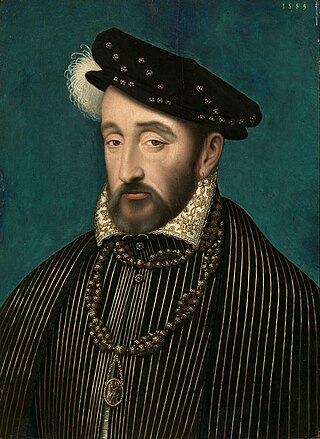
Henry II was King of France from 1547 until his death in 1559. The second son of Francis I and Duchess Claude of Brittany, he became Dauphin of France upon the death of his elder brother Francis in 1536.
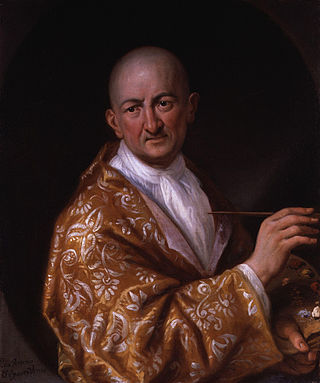
Antonio Verrio was an Italian Baroque painter. He was responsible for introducing Baroque mural painting into England and served the Crown over a thirty-year period.

Benjamin West was a British-American artist who painted famous historical scenes such as The Death of Nelson, The Death of General Wolfe, the Treaty of Paris, and Benjamin Franklin Drawing Electricity from the Sky.

Alexandre Cabanel was a French painter. He painted historical, classical and religious subjects in the academic style. He was also well known as a portrait painter. He was Napoleon III's preferred painter and, with Gérôme and Meissonier, was one of "the three most successful artists of the Second Empire."

JeanFouquet was a French painter and miniaturist. A master of panel painting and manuscript illumination, and the apparent inventor of the portrait miniature, he is considered one of the most important painters from the period between the late Gothic and early Renaissance. He was the first French artist to travel to Italy and experience first-hand the early Italian Renaissance.
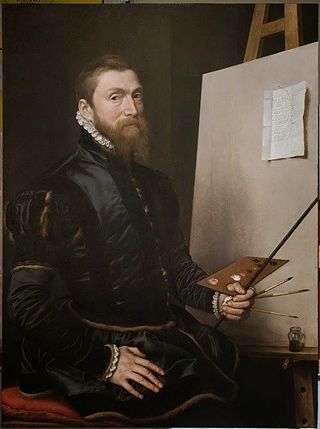
Anthonis Mor, also known as Anthonis Mor van Dashorst and Antonio Moro, was a Netherlandish portrait painter, much in demand by the courts of Europe. He has also been referred to as Antoon, Anthonius, Anthonis or Mor van Dashorst, and as Antonio Moro, António Mouro, Anthony More, etc., but signed most of his portraits as Anthonis Mor.

Nicolas de Largillière was a French painter and draughtsman.

A portrait miniature is a miniature portrait painting, usually executed in gouache, watercolor, or enamel. Portrait miniatures developed out of the techniques of the miniatures in illuminated manuscripts, and were popular among 16th-century elites, mainly in England and France, and spread across the rest of Europe from the middle of the 18th century, remaining highly popular until the development of daguerreotypes and photography in the mid-19th century. They were usually intimate gifts given within the family, or by hopeful males in courtship, but some rulers, such as James I of England, gave large numbers as diplomatic or political gifts. They were especially likely to be painted when a family member was going to be absent for significant periods, whether a husband or son going to war or emigrating, or a daughter getting married.
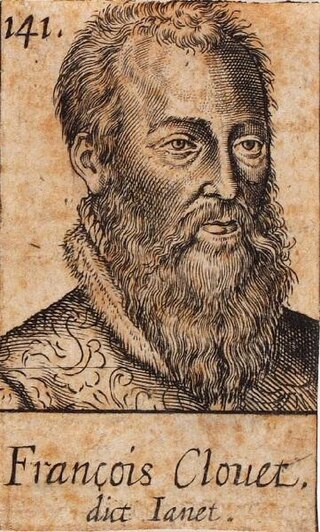
François Clouet, son of Jean Clouet, was a French Renaissance miniaturist and painter, particularly known for his detailed portraits of the French ruling family.

Jean Petitot was a Swiss enamel painter, who spent most of his career working for the courts of France and England.
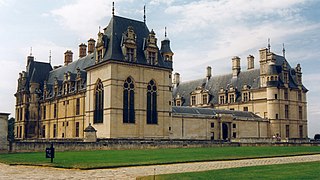
The Château d'Écouen is an historic château in the commune of Écouen, some 20 km north of Paris, France, and a notable example of French Renaissance architecture. Since 1975, it has housed the collections of the Musée national de la Renaissance.
Events from the year 1766 in art.

Arnold Bronckhorst, or Bronckorst or Van Bronckhorst was a Flemish or Dutch painter who was court painter to James VI of Scotland.

Alexis Simon Belle was a French portrait painter, known for his portraits of the French and Jacobite nobility. As a portrait artist, Belle's style followed that of his master François de Troy, Hyacinthe Rigaud, and Nicolas de Largillière. He was the master of the painter Jacques-André-Joseph-Camelot Aved (1702–1766).

Claude Lefèbvre was a French painter and engraver.

Limoges enamel has been produced at Limoges, in south-western France, over several centuries up to the present. There are two periods when it was of European importance. From the 12th century to 1370 there was a large industry producing metal objects decorated in enamel using the champlevé technique, of which most of the survivals, and probably most of the original production, are religious objects such as reliquaries.

Adrian Vanson was a portrait artist who worked for James VI of Scotland.
Joseph-Désiré Court was a French painter of historical subjects and portraits.
Marc Duval or Du Val was a French court painter and printmaker, most notable for his portraits of leaders of the Huguenot faction and as the probable painter of works previously attributed to the "Master of the Portrait of Sébastien de Luxembourg, Viscount of Martigues". For a time he was considered one of France's best draughtsmen and engravers. He worked at the court of the last kings of the Valois dynasty and produced highly-valued portraits of them and other nobility in Paris, dying in that city on 13 September 1581, a date he had himself predicted. He was married to Catherine, though her maiden name is unknown, and their daughter remained in Paris and was a talented artist.




















